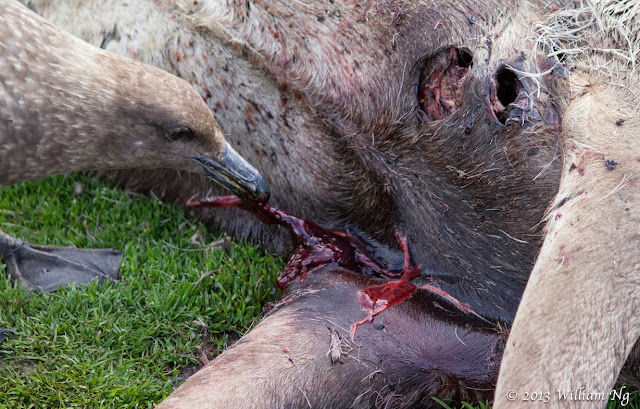Warning: this post contains explicit content some readers may find disturbing.
Looking back at the expedition now, one thing that surprises me is how the most extraordinary things were so simple and ordinary in the wilderness.
Life and death should be extraordinary events in our city lives. I mean, how many of you witness death, even for animals, on a regular basis? I certainly haven't seen a dying or dead animal (except for that time when I hit a badger, or at least I think it was a badger, at 70mph). Yet, when we saw injured, dying or dead animals in Antarctica, it was just so natural, so matter of course.
Each of the animals in this post had their own stories. They may not be the same stories as what I am telling here. Nevertheless, they each deserve a few words, and a moment of our appreciation. Appreciation for the gift of life, and all the opportunities and responsibilities that come with it.
 |
| We came across reindeer carcasses almost every day. This one had most of its meat stripped out, organs removed, leaving behind the skeleton, a pool of blood, and a bullet hole. |
 |
| Sometimes the reindeer is just left, to the delight of scavenger skuas. |
 |
| A photo found in the Gryvitken museum depicting the process of skinning and carving a whale using a range of tools once it was taken back to the station. |
 |
| A set of whale bones found at Port Lockroy in the Antarctica Peninsula. |
 |
| Dead penguin = good meal for scavenger skuas |






No comments:
Post a Comment
Thank you for your valuable comments and feedback!